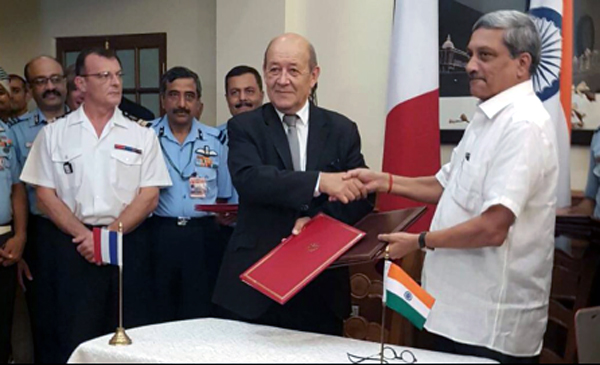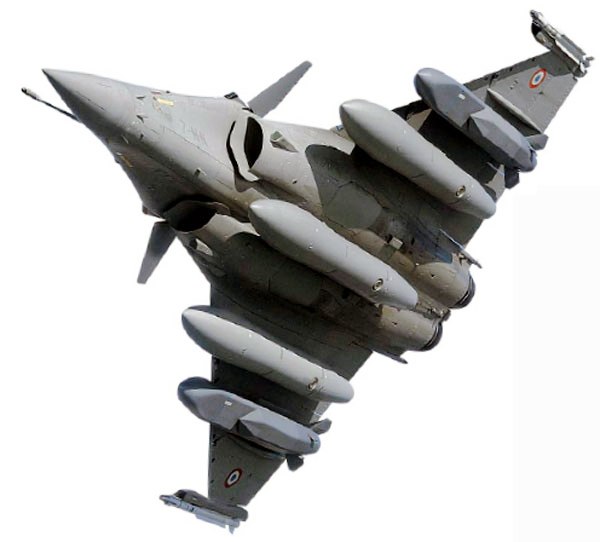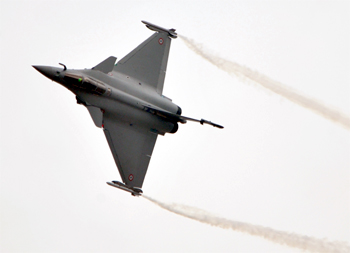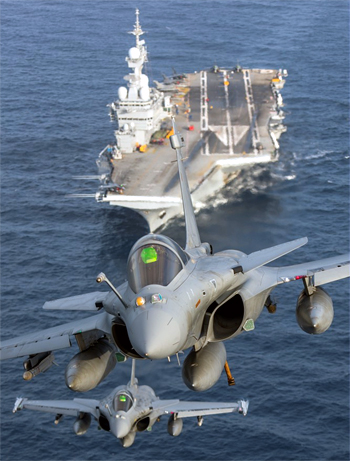India, France sign € 7.87b deal for 36 Rafale Aircraft

New Delhi. India and France finally signed the € 7.87 billion deal for 36 cutting edge technology Rafale Medium Multi Role Combat Aircraft (MMRCA) September 23.
The deal was inked between Defence Minister Manohar Parrikar and his visiting counterpart, Jean Yves Le Drian, who flew in New Delhi on September 22 after hard negotiations between Indian diplomats and Indian Air Force (IAF) officials on the one side and their French counterparts and manufacturing company Dassault officials on the other.The first lot of the aircraft will be delivered to India within 36 months and the final by 66 months. All the aircraft are being bought in flyaway condition.
According to a statement by Thales, which is providing the cutting edge war technologies on the aircraft, 28 Rafales would be single seater and eight twin-seater. The latter can be used for training as well as for some critical missions where the IAF leadership would consider deplyment of a two-man crew prudent.

Surprisingly, there is no options clause in the agreement for another 18 aircraft but there is provision for a sizable number of Scalp and Meteor missiles.
A significant clause is for Dassault to ensure 75 per cent availability of the aircraft in all times for five years. IAF would be a paying a substantial sum for this in the package.
 Significantly again, this is the second major combat jet deal by India in about 30 years, after allegations of corruption erupted over the acquisition of Bofors guns from Sweden. VP Singh, a minister in Prime Minister Rajiv Gandhi’s government, wanted to succeed him and ran a political campaign also adding that ‘the Bofors gun was of poor quality, fired backwards, and killed own troops.’
Significantly again, this is the second major combat jet deal by India in about 30 years, after allegations of corruption erupted over the acquisition of Bofors guns from Sweden. VP Singh, a minister in Prime Minister Rajiv Gandhi’s government, wanted to succeed him and ran a political campaign also adding that ‘the Bofors gun was of poor quality, fired backwards, and killed own troops.’
He did succeed to become the country’s Prime Minister, but triggered a paralysis in the process of acquisition and modernization for the armed forces which is still to fade out.
Except for the Su-30 MKIs, the deal for which was signed in November 1996, IAF’s inventory of combat jets consists of 1970s and 1980s generation machines. They need to be replaced ASAP, and overall, IAF has to plan acquisition of about 400 more aircraft, half of which should be Indian-made Light Combat Aircraft (LCA) Tejas.
IAF has ordered 272 of these Russian combat jets, and at a reported cost of $50 million each, sans weapons, this is the biggest purchase yet at about $14 billion. The aircraft is now made in India with raw materials, engines, ejection seats and main radar from Russia.
 Notably, the Rafale deal is still huge; at € 7.87 billion, it means $8.8 billion or INR 59,000 crores for 36 Rafales. Nearly half of this cost is for the aircraft, and the remaining for weapons, spares and onboard systems in accordance with certain Indian specifications.
Notably, the Rafale deal is still huge; at € 7.87 billion, it means $8.8 billion or INR 59,000 crores for 36 Rafales. Nearly half of this cost is for the aircraft, and the remaining for weapons, spares and onboard systems in accordance with certain Indian specifications.
The package of missiles includes Air to Ground Scalp and Air to Air Meteor, both made by France-based European company MBDA, Electronic Warfare systems and a very modern AESA (Active Electronically Scanned Array) radar made by Thales. The power systems, that is the engines, will come from the Safran. Both are French companies.
Actually, while Dassault has designed and integrates the aircraft, nearly 40 per cent work each is shared by Thales and Safran.
It may be recalled that in the original six-cornered MMRCA competition for 126 (plus 63 as option) aircraft in 2007, there was a provision for HARM anti-radiation missiles from the US war technology company Raytheon. That competition was scrapped but it is not known if the requirement for the HARM missiles is still there. Perhaps, the provision to fit this will be there if IAF ever decides to.
HARM (High-speed Anti Radiation Missile)is among the best available missiles to hit enemy radars, a vital requirement in wartime.
Similarly, AESA is a primary onboard requirement for combat aircraft to scan hostile movements in the air or ground up to 400 km. In US Air Force aircraft, AESA radars developed by Northrop Grumman and Raytheon have been operational for about a decade.





